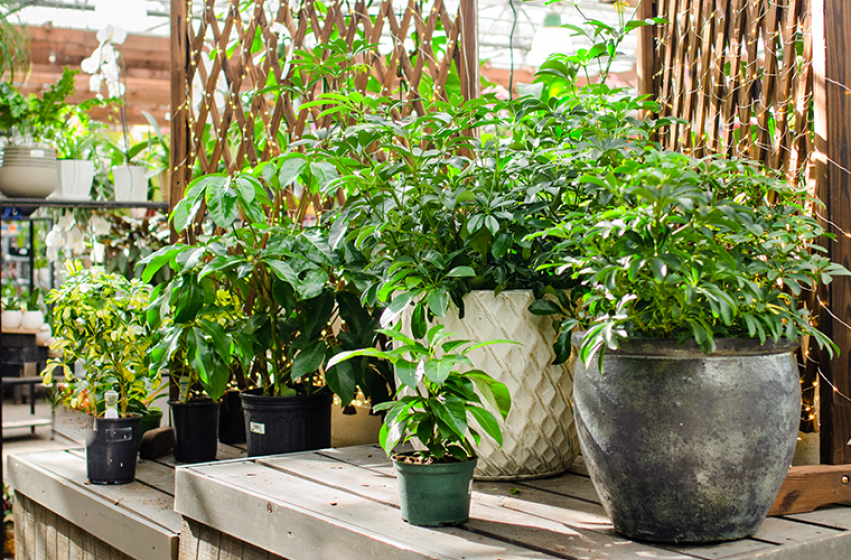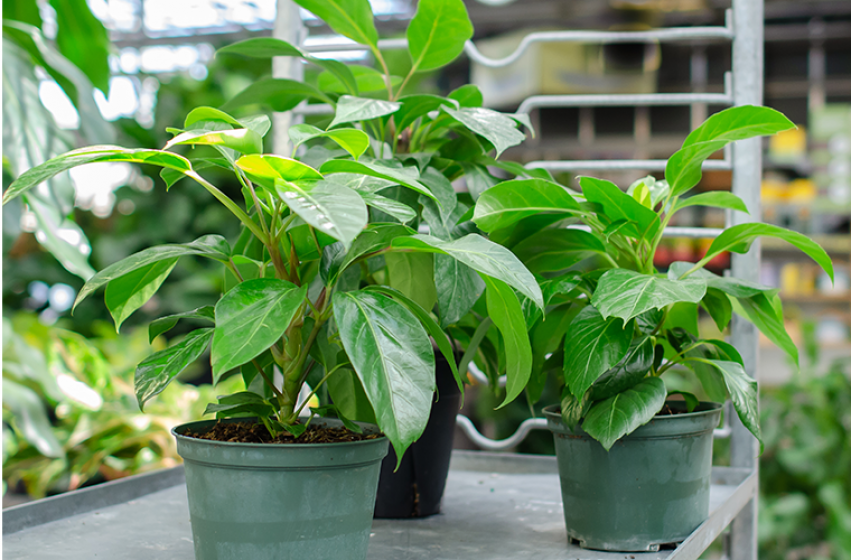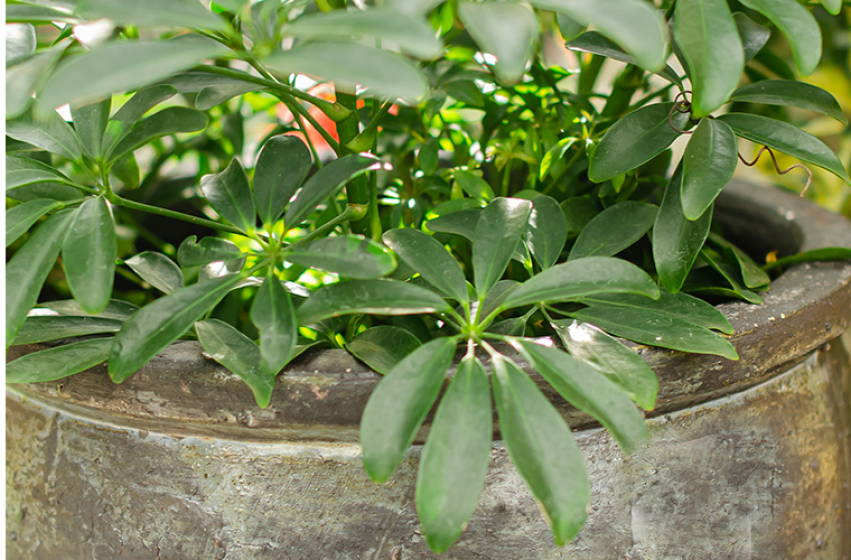If you’re looking for an easygoing, fast-growing plant, then Scheffleras are an excellent choice. Also known as umbrella plant, schefflera gets its name from the look of its long, oval leaves, which grow in clusters and create a large umbrella-like canopy. These highly adaptive plants feature lush, green or variegated foliage and are available in all shapes and sizes. Scheffleras are frequently used in interior decorating and are often seen adorning homes, lobbies, shopping malls, and waiting rooms. With the right care, these plants can flourish for years.
GENERAL CARE REQUIREMENTS
Lighting - Scheffleras do best in well-lit locations. Bright, indirect sunlight is best. Be careful not to put your plant in full sun, since leaves can burn. If you have less than ideal lighting, some of the solid green leaf varieties tend to acclimate better to medium light situations (variegated varieties require more light than green varieties). If the leaves start to droop, the plant may need additional light. TIP: Give them a spin every now & then because like all plants, they grow towards the light.
Soil - Choose a light, well-draining, all-purpose potting soil. A good potting soil helps the plant to retain moisture, provide enough air for growing roots to breath (preventing root rot), and supports the plant by providing anchorage for the roots.
Watering – Scheffleras prefer to be kept on the moist side, but not so wet to promote root rot. They are fairly drought tolerant, so it’s always better to under-water than over-water.
Temperature - Scheffleras prefer the same temperatures that many homes are kept. Nighttime temperatures in the lower 60’s and daytime temperatures in the 70’s are ideal. Avoid placing your plant near a heating or air conditioning vent.
Pruning - Scheffleras are fast growers and respond well to pruning. If you feel that your plant is growing too “leggy”, too tall, or too bushy, prune to acquire and maintain the shape and size that is best suited for your space.
Feeding - Feed once a month with a general all-purpose houseplant fertilizer. You may stop feeding and reduce watering in fall and winter when plant growth slows down.
Pests - Watch for mealybugs, red spider mites, aphids, and scale. Apply insecticidal soap or horticultural oil to control pests. TIP: Dust-free, well-humidified plants suffer the fewest problems, so frequent misting is recommended.
VARIETIES
Scheffleras are available in many varieties, offering lots of versatility in size, shape and foliage color. Here are a few of our favorite:
Schefflera Amate – is a gorgeous variety that features large, glossy leaves and an upright, bushy habit. As a houseplant, Amate can grow to 10-feet tall. This is not a narrow plant, so make sure you have the space for it. Amate holds leaves well, even under low light, interior conditions. When indoors, place in area that receives morning sun, preferably in an east-facing window. When watering, make sure the soil is thoroughly watered and the excess is allowed to drain off. Trim and shape to prevent it from getting too bushy.
Schefflera Alpine - is a hardy variety that tolerates cooler conditions more than most other traditional selections. Alpine has a distinctive, columnar habit, which makes it ideal for growing in narrow spaces. It is an excellent indoor performer that does especially well in low light and well-drained soil. Alpine reaches between 2 to 6-feet tall. Prune to keep it tidy and to the desired height.
Schefflera Trinette – is another variegated variety with a dwarf growth habit that is well suited for indoor growing. Its glossy, oval leaves remain dark green, with showy yellow variegation and tinges of creamy white throughout. Grown indoors, Trinette can reach about 3-feet tall and wide. This variety performs well in both bright or indirect sunlight and prefers well-drained, moist soil. Prune anytime to keep it looking its best.
Schefflera Arboricola Green – is yet another dwarf variety with dark green, hand-shaped leaves and a compact habit. Does best in high light but will usually do just fine in medium light. Water once the topsoil becomes dry. Grown indoors, Arboricola can grow up to 4 to 8-feet tall. Prune and top to keep it to a manageable size.
For information on how to be successful with houseplants click here.




